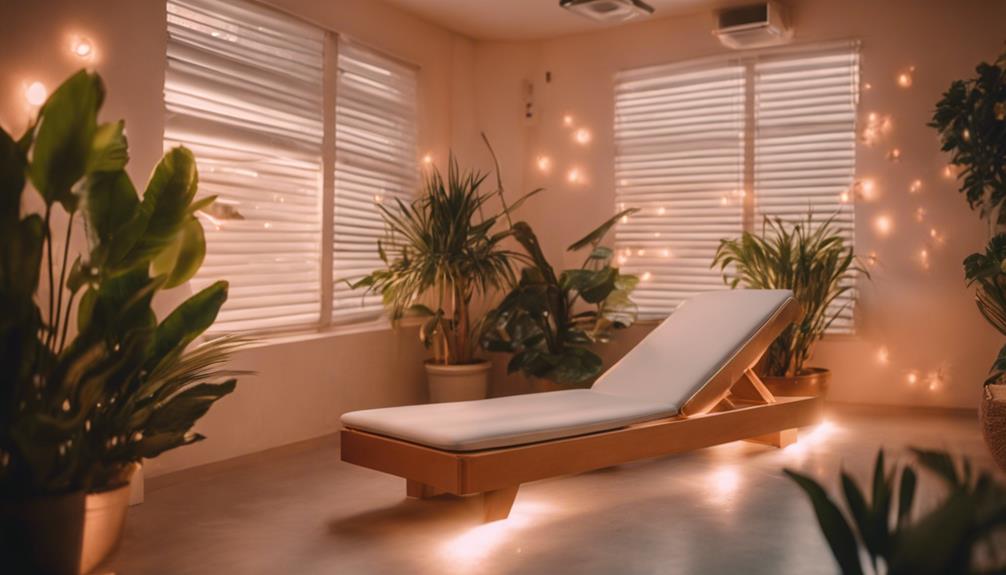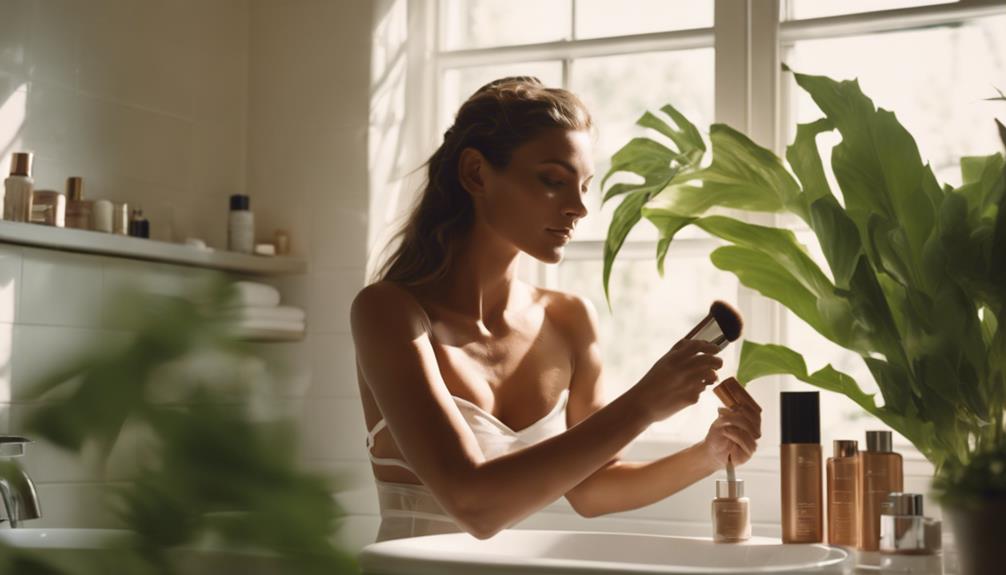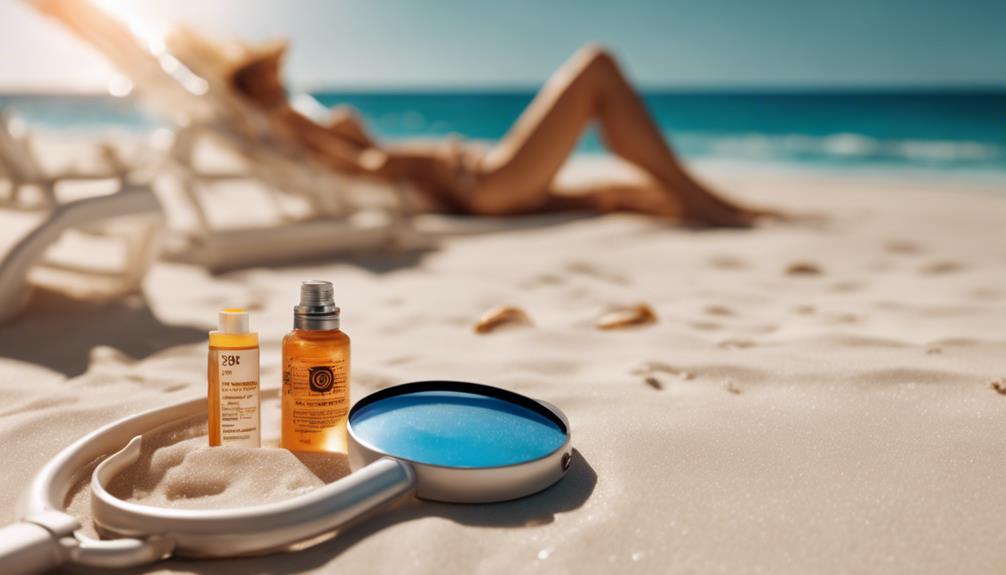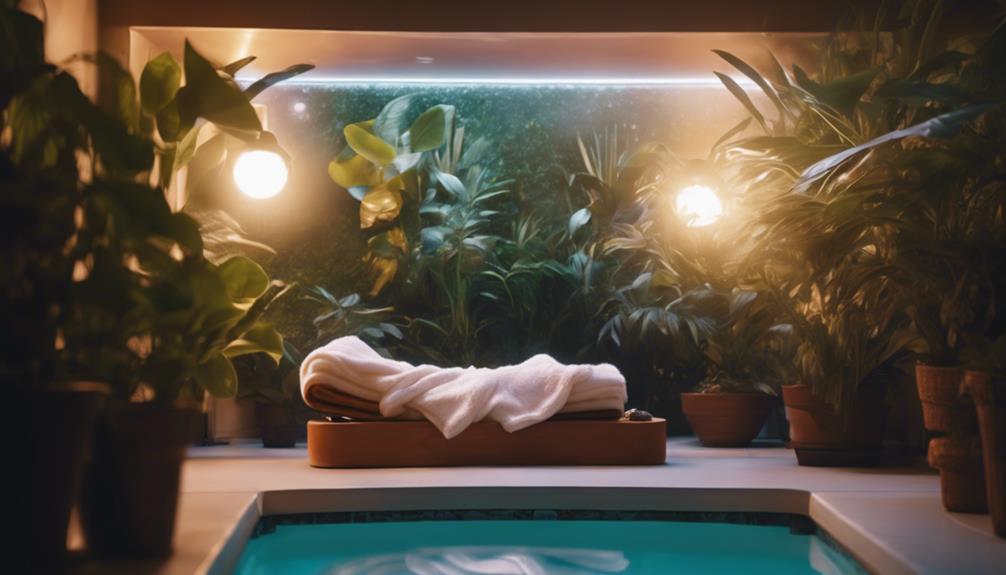Tanning beds aren't safe. Using them greatly raises your risk of skin cancer, especially melanoma, due to harmful UV exposure. They also cause premature aging and skin damage with no real health benefits. While some types may seem better, like high-pressure beds, the risks outweigh any temporary tanning results. If you decide to use a tanning bed, remember to follow safe practices, like using protective eyewear and moisturizing afterward. It's crucial to prioritize your skin's health. For a better understanding of tanning bed safety, explore the facts and myths surrounding this popular but risky practice.
Key Takeaways
- Tanning beds significantly increase the risk of skin cancer, especially melanoma, due to harmful UV radiation exposure.
- Frequent use of tanning beds leads to skin damage, including premature aging and wrinkles.
- No health benefits are associated with tanning beds; they primarily pose harmful effects on skin health.
- Protective measures, like using eyewear and limiting session duration, are essential but do not eliminate risks.
Health Risks of Tanning Beds
Tanning beds greatly increase your risk of skin cancer and other serious skin issues. The concentrated UV radiation they emit is linked to a higher likelihood of developing melanoma, especially with frequent use.
You might think you're just getting a tan, but each session greatly raises your chances of skin damage. Long-term exposure can lead to premature aging, wrinkles, and even severe skin conditions.
There are no health benefits to using tanning beds; they primarily pose harmful effects. If you want to preserve your youthful skin, it's essential to avoid these beds.
Prioritizing your skin health over the temporary allure of a tan can protect you from devastating consequences in the future. Remember, your skin's health should always come first.
Types of Tanning Beds

Choosing the right type of tanning bed can greatly impact your tanning experience and results. There are several options available, each designed to cater to different preferences and needs.
| Tanning Bed Type | Description |
|---|---|
| Horizontal Beds | Offer an even tan with bulbs positioned above and below, allowing you to lie down comfortably. |
| Vertical Booths | Provide a quick, all-around tan while standing, ideal for those who prefer a faster session. |
| High-Pressure Beds | Emit more UVA rays, which lowers the burn risk and can result in a deeper tan with fewer sessions. |
Understanding these types helps you make informed decisions for your tanning goals. Each bed type offers unique benefits, so consider what works best for you.
Safe Tanning Practices

Selecting the right tanning bed is just the first step; practicing safe tanning techniques is essential for protecting your skin while achieving your desired results.
Always wear protective eyewear to shield your eyes from harmful UV rays. Before tanning, shower to remove lotions and makeup, ensuring an even tan.
Limit your tanning sessions to avoid overexposure, and never exceed recommended time limits. Applying a broad-spectrum sunscreen can help protect your skin, even when using tanning beds.
Additionally, maintain a clean environment by wiping down the bed after use, and avoid sharing personal items to promote hygiene.
Post-Tanning Skin Care

Caring for your skin after a tanning session is essential to maintain hydration and prevent irritation. Your skin needs extra attention to prolong your tan and keep it looking healthy.
Here are three key steps to follow:
- Moisturize: Apply a rich moisturizer or aloe vera gel to soothe and hydrate your skin immediately after tanning. This helps prevent peeling and keeps your tan even.
- Hydrate: Drink plenty of water to replenish moisture lost during tanning. Staying hydrated supports your skin's elasticity and overall health.
- Gentle Aftercare: Use a gentle after-sun lotion before bed. This helps calm any irritation and promotes recovery, ensuring your skin feels refreshed and revitalized.
Choosing the Right Bronzer

Finding the right bronzer can enhance your tan and give your skin a natural glow without looking streaky or unnatural. When choosing a bronzer, consider your skin tone and the finish you desire. Here's a quick guide to help you decide:
| Skin Tone | Bronzer Type | Finish |
|---|---|---|
| Fair | Light matte bronzer | Natural glow |
| Medium | Cream bronzer | Dewy finish |
| Olive | Warm-toned bronzer | Sun-kissed look |
| Dark | Deep liquid bronzer | Radiant glow |
| All skin tones | Bronzing powder | Buildable coverage |
Always test bronzers before applying to verify they complement your skin tone and provide the look you want. Remember, bronzers should enhance, not replace your natural beauty!
Legal Guidelines for Tanning

Understanding the legal guidelines for tanning is important, especially since many regions restrict tanning bed use for minors due to health risks. These regulations aim to protect young skin from the dangers of UV exposure.
Here are some key points to evaluate:
- Age Restrictions: Many states prohibit minors, typically under 18, from using tanning beds without parental consent.
- Facility Regulations: Tanning salons must adhere to safety protocols, including regular equipment maintenance and staff training.
- Health Warnings: Tanning facilities are often required to display clear warnings about the risks associated with tanning bed use.
Being aware of these guidelines helps you make informed decisions about tanning and prioritize your skin's health.
Myths About Tanning Safety

Many people believe common myths about tanning safety, which can lead to dangerous misconceptions about the risks involved.
One prevalent myth is that tanning beds are safe if you have a base tan. In reality, a base tan offers minimal protection and increases skin cancer risk.
Another misconception is that tanning beds only emit UVA rays, which are safer. In fact, they emit both UVA and UVB rays, both of which can damage your skin.
Some think that tanning beds can provide vitamin D, but the risks far outweigh any benefits.
Ultimately, believing these myths can jeopardize your skin health, making it essential to understand the real dangers of tanning beds and prioritize safer alternatives.
Frequently Asked Questions
Can Tanning Beds Help With Vitamin D Deficiency?
Tanning beds won't effectively help with vitamin D deficiency. Instead, consider safer alternatives like supplements or natural sunlight exposure. Prioritize your health and skin safety over quick fixes, especially given the risks associated with tanning beds.
How Often Can I Safely Use a Tanning Bed?
You shouldn't use tanning beds frequently. Even occasional use increases skin cancer risk, particularly if you're under 35. Prioritize skin health and consider safer alternatives like spray tans for a bronzed look without the risks.
What Are the Signs of Tanning Bed Overexposure?
If you've overexposed yourself to a tanning bed, look for signs like redness, peeling skin, or excessive dryness. You might also experience increased sensitivity or discomfort. Always prioritize your skin's health and avoid further tanning.
Are There Alternatives to Tanning Beds for Bronzing?
If you're looking for a glow without the tanning bed drama, consider self-tanners, bronzing lotions, or spray tans. They'll give you that sun-kissed look without the harmful UV exposure. Your skin will thank you!
Can I Tan With a Sunburn From a Tanning Bed?
You shouldn't tan with a sunburn from a tanning bed. Your skin's already damaged, and tanning could worsen irritation and increase long-term risks. Focus on healing first, then consider safer alternatives for achieving a tan.
Conclusion
In summary, while tanning beds may seem like a quick fix for a golden glow, the risks can outweigh the benefits.
Did you know that using a tanning bed just once can increase your risk of melanoma by 20%? It's essential to prioritize your skin's health and consider safer alternatives.
By staying informed and adopting safe tanning practices, you can achieve a beautiful tan without compromising your well-being.
Make choices that protect your skin for the long run!










